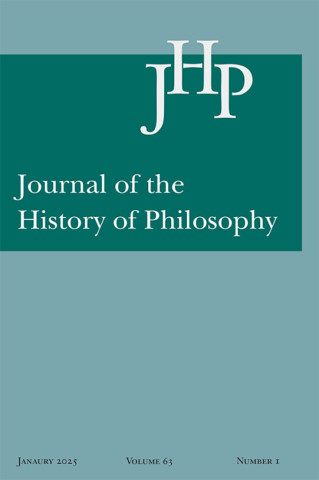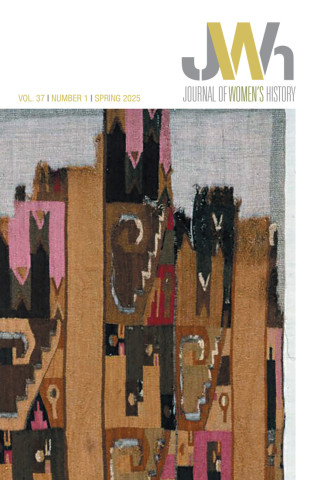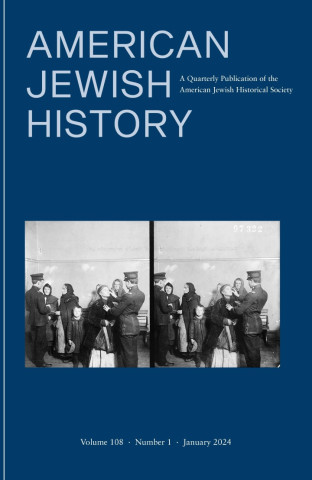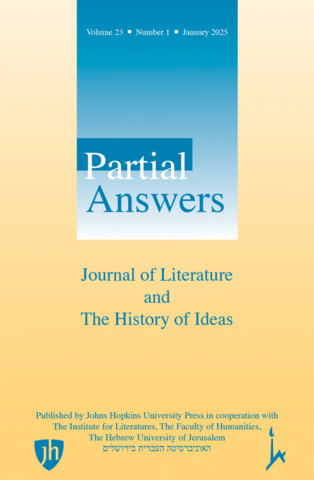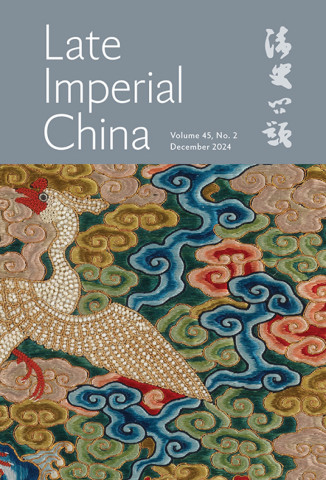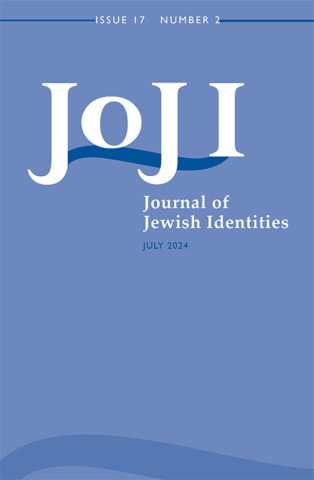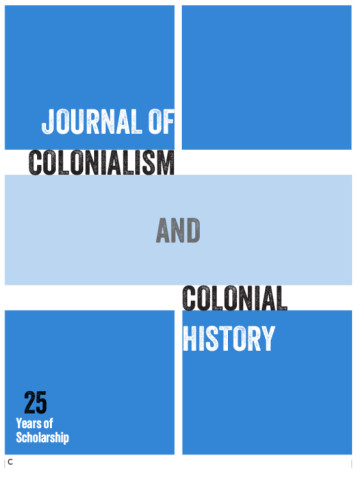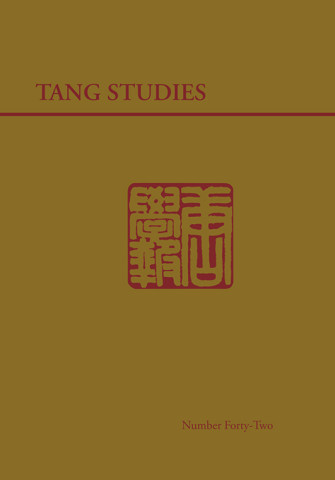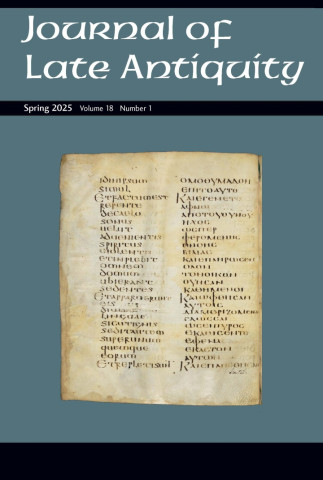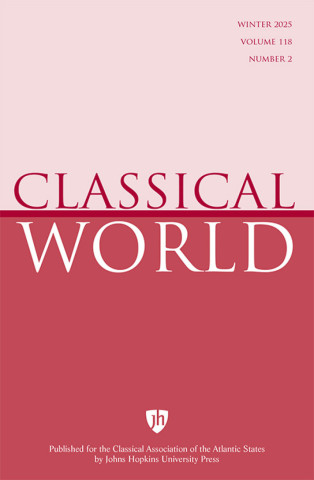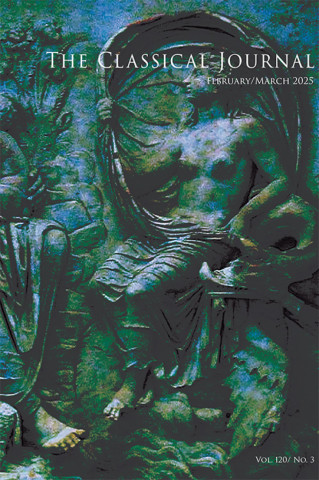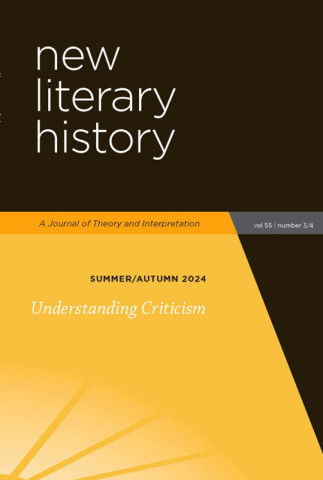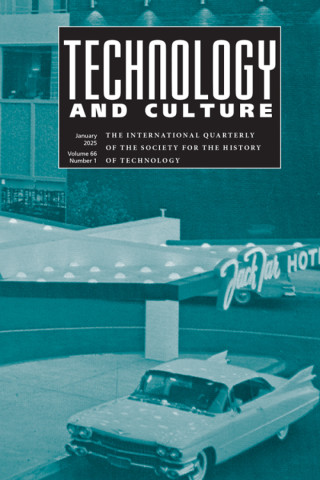

Technology and Culture
Journal Details
Online: 1097-3729
As the incoming editorial team for Technology and Culture, we are dedicated to increasing the journal’s accessibility by creating larger audiences for our research articles.
We are looking for submissions that speak to a global audience beyond your topic to help shed light on its significance for scholars working in other topics. Also important is to indicate how your topic is relevant for today’s scholarship. Finally, we would like you to consider how your manuscript would be taught in the classroom.
In all submissions, we are looking to see—at a minimum—a discussion of:
- Historiographical context of your case study
- Global relevance
- Broader significance of your case study
These points should be made clear in the abstract.
Submission of a manuscript implies your assurance that the content has not previously been published in form or in substance, and that the manuscript is not under consideration elsewhere.
Manuscripts may be submitted via Scholastica, our electronic submission system: technology-and-culture.scholasticahq.com/. You will have to create a user id on Scholastica to proceed.) We do not accept hard copy submissions. Email submissions will only be accepted if the author is unable to access the Scholastica system.
We can work with files in any common Mac or Windows word processor format, but World Files are preferred. Please do not send a PDF file. Articles are selected by double-blind peer review. The only place your name should appear is on a separate title page; please be sure to remove any self-referencing footnotes as well. If your identity is obvious from the manuscript, it cannot be sent out for review.
Length, format, and style: We have a word limit of 7,500 words (without footnotes) per article, with a maximum of 100 footnotes. Footnotes should not be discursive: if the information is important, put it in the text! We have a limit of six illustrations and or tables. Please upload your illustrations as individual files, do not embed them in the text but upload them on Scholastica as individual files. If you feel that you need to exceed one of these limits significantly, please consult the managing editor (managingeditor@techculture.org). Make sure, however, that the manuscript file has callouts indicating where each figure should be placed.
Please use a standard font (e.g., Arial, Times New Roman) in a standard size (12 point). Use minimal formatting. Double space everything, including block quotations, notes, and figure captions, and leave adequate margins. Do not embed illustrations or tables in the text; send them as separate files instead. For notes, we use the Chicago Manual of Style’s footnotes-bibliography style.
The Hopkins Press Journals Ethics and Malpractice Statement can be found at the ethics-and-malpractice page.
Peer Review Policy
Technology and Culture (T&C) seeks to publish outstanding, original contributions to research in the history of technology. Manuscript submissions should not be published or under review elsewhere. The editorial team pre-screens all articles for suitability to the journal’s mission and soundness of scholarship. Submissions accepted for review are sent to two or three peer reviewers, who are given two months to respond. Peer reviewing is double-blind. Referees evaluate the quality and reliability of the scholarship, and its relevance for T&C’s broad readership. If referees request revisions, the manuscript may go through multiple rounds of peer review; whenever possible, the same reviewers will read the manuscript through each round of review.
Editor-in-Chief
Ruth Oldenziel, Eindhoven University of Technology
Managing Editor
Hermione Giffard , Foundation for the History of Technology/Eindhoven University of Technology
Book Review Editor
Dick van Lente, Foundation for the History of Technology/Eindhoven University of Technology
Assistant Book Review Editors
Henk-Jan Dekker, Eindhoven University of Technology
Leon Vauterin, Eindhoven University of Technology
Public History Editor
Johannes Geert-Hagmann, Deutsches Museum
Style Editor
Val Kidd
Contributing Editors
Yakup Bektas, Tokyo Institute of Technology, Japan
Keith Breckenridge, University of Witwatersrand, South Africa
Lino Camprubi, University of Seville, Spain
Yao Dazhi, Chinese Academy of Science, China
Cornelis Disco, Independent Scholar, France
Donna Drucker, Technical University of Darmstadt, Germany
Rayvon Fouché, Purdue University, U.S.A.
Alexander C. T. Geppert, New York University, U.S.A.
Anna Guagnini, University of Bologna, Italy
Liliane Hilaire-Pérez, Université Paris Diderot, France
Chihyung Jeon, Korean Advanced Institute for Science and Technology, South Korea
Eda Kranakis, University of Ottawa, Canada
Leonard Laborie, Centre national de la recherche scientifique, France
Angela Leung, University of Hong Kong, China
Pamela O. Long, Washington, D.C., USA
Carlos López Galviz, University of Lancaster, UK
John Lourdusamy, Indian Institute of Tech Madras, India
Harro Maat, University of Wageningen, The Netherlands
Patrick McCray, University of California, Santa Barbara, USA
Cyrus Mody, Maastricht University, The Netherlands
Jahnavi Phalkey, Science Gallery, India
David Pretel, Universitat Pompeu Fabra, Spain
Andrew Russell, SUNY Polytechnic Institute, USA
Luisa Sousa, New University of Lisbon, Portugal
Helmuth Trishler, Deutsches Museum, Germany
Matteo Valeriani, Max Planck Institute for the History of Science, Germany, and Tel Aviv University, Israel
Dhan Zunino Singh, University of Quimes, Argentina
Geoff Zylstra, New York City College of Technology, USA
Past Editors-in-Chief
Melvin Kranzberg, 1959–81
Robert C. Post, 1982–95
John M. Staudenmaier, S.J., 1996–2010
Suzanne Moon, 2010-2020
Sponsoring Institutions
Eindhoven University of Technology
Foundation for the History of Technology
Book review information can be obtained by contacting:
Dick van Lente
editors@techculture.org
Please send book review copies to the contact above. Review copies received by the Johns Hopkins University Press office will be discarded.
Abstracting & Indexing Databases
- Association for Asian Studies
- Bibliography of Asian Studies (Online), 1975-1991
- Clarivate Analytics
- Arts & Humanities Citation Index
- Current Contents
- Web of Science
- Council for British Archaeology
- British and Irish Archaeological Bibliography (Online)
- De Gruyter Saur
- Dietrich's Index Philosophicus
- IBZ - Internationale Bibliographie der Geistes- und Sozialwissenschaftlichen Zeitschriftenliteratur, coverage dropped
- Internationale Bibliographie der Rezensionen Geistes- und Sozialwissenschaftlicher Literatur, coverage dropped
- EBSCOhost
- Academic Search Alumni Edition, 7/1/1990-
- Academic Search Complete, 7/1/1990-
- Academic Search Elite, 7/1/1990-
- Academic Search Premier, 7/1/1990-
- America: History and Life, 12/1/1958-
- Applied Science & Technology Abstracts (H.W. Wilson), 1/1/1991-7/1/2003
- Applied Science & Technology Full Text (H.W. Wilson), 1/1/1991-7/1/2003
- Applied Science & Technology Index (H.W. Wilson), 1/1/1991-7/1/2003
- Applied Science & Technology Source, 7/1/1990-
- ATLA Religion Database (American Theological Library Association), 1984-1984, dropped
- Biography Index: Past and Present (H.W. Wilson), vol.21, 1980-vol.52, no.2, 2011
- Book Review Digest Plus (H.W. Wilson), Jan.1983-Dec.1993
- Communication Abstracts, 1/1/1975-
- Computer Science Index, 7/1/1990-
- Computers & Applied Sciences Complete, 7/1/1990-
- Current Abstracts, 1/1/2000-
- Historical Abstracts (Online), 1/1/1960-
- Humanities & Social Sciences Index Retrospective: 1907-1984 (H.W. Wilson), 1/1/1974-10/1/1982
- Humanities Source, 1/1/1974-1/1/1982
- Humanities Source Ultimate, 1/1/1974-1/1/1982
- Library & Information Science Source, 7/1/1976-4/1/1977
- MasterFILE Complete, 1/1/1975-
- MasterFILE Elite, 7/1/1990-
- MasterFILE Premier, 7/1/1990-
- MLA International Bibliography (Modern Language Association)
- OmniFile Full Text Mega (H.W. Wilson), 7/1/1980-
- Poetry & Short Story Reference Center, 1/1/1975-
- Public Affairs Index, 7/1/2000-
- RILM Abstracts of Music Literature (Repertoire International de Litterature Musicale)
- Russian Academy of Sciences Bibliographies
- Social Sciences Abstracts (H.W. Wilson), 7/1/1980-
- Social Sciences Full Text (H.W. Wilson), 7/1/1980-
- Social Sciences Index Retrospective: 1907-1983 (H.W. Wilson), 1974/01-1982/10
- SocINDEX, 1/1/1965-
- SocINDEX with Full Text, 1/1/1965-
- STM Source, 7/1/1990-
- STM Source, 7/1/1990-
- TOC Premier (Table of Contents), 1/1/1995-
- Women's Studies International, 1/1/1965-
- Elsevier BV
- EMBASE
- Scopus, 1995-, 1984-1993, 1978-1982, 1974-1976, 1970
- FRANCIS
- Gale
- Academic ASAP, 01/1987-01/2016
- Book Review Index Plus
- Gale Academic OneFile
- Gale Academic OneFile Select, 01/1987-01/2016
- Gale General OneFile, 01/1987-01/2016
- InfoTrac Custom, 1/1987-1/2016
- MLA International Bibliography (Modern Language Association)
- H.W. Wilson
- Social Sciences Index, 1983/01-1993/12; 1999/07-
- National Library of Medicine
- PubMed
- OCLC
- ArticleFirst, vol.33, no.2, 1992-vol.52, no.3, 2011
- Electronic Collections Online, vol.39, no.3, 1998-vol.52, no.3, 2011
- Periodical Abstracts, v.30, n.1, 1989-v.52, n.2, 2011
- Sociological Abstracts (Online), Selective
- Personal Alert (E-mail)
- ProQuest
- ABI/INFORM Collection, 1/1/1989-
- ABI/INFORM Global (American Business Information), 1/1/1989-
- Advanced Technologies & Aerospace Database, 1/1/1989-
- Art, Design & Architecture Collection, 01/01/1989-
- Arts & Humanities Database, 01/01/1989-
- Arts Premium Collection, 1/1/1989-
- Business Premium Collection, 01/01/1989-
- Computing Database, 01/01/1989-
- Engineering Database, 01/01/1989-
- Health & Medical Collection
- Health Research Premium Collection
- Hospital Premium Collection
- International Bibliography of Art, Selective
- International Bibliography of the Social Sciences, Core
- Materials Science & Engineering Collection, 1/1/1989-
- Materials Science & Engineering Database, 1/1/1989-
- Medical Database
- MLA International Bibliography (Modern Language Association)
- Periodicals Index Online
- Professional ABI/INFORM Complete, 01/01/1989-
- Professional ProQuest Central, 01/01/1989-
- ProQuest 5000, 01/01/1989-
- ProQuest 5000 International, 01/01/1989-
- ProQuest Central, 01/01/1989-
- Research Library, 01/01/1989-
- RILM Abstracts of Music Literature (Repertoire International de Litterature Musicale)
- Science Database, 01/01/1989-
- SciTech Premium Collection, 01/01/1989-
- Social Science Database, 1/1/1989-
- Social Science Premium Collection, 01/01/1989-
- Social Services Abstracts, Selective
- Sociological Abstracts (Online), Selective
- Technology Collection, 01/01/1989-
- The Getty Conservation Institute
- AATA Online (Art and Archaeology Technical Abstracts), coverage dropped
- U.S. National Library of Medicine
- MEDLINE
Abstracting & Indexing Sources
- Children's Book Review Index (Active) (Print)
- Academic Index (Ceased) (Print)
- Numismatic Literature (Ceased) (Print)
- Religion Index One: Periodicals (Ceased) (Print)
- Religion Index Two: Multi-Author Works (Ceased) (Print)
- Social Planning - Policy & Development Abstracts (Ceased) (Print)
- Middle East: Abstracts and Index (Researched / Unresolved) (Print)
Source: Ulrichsweb Global Serials Directory.
0.8 (2023)
1,187 Total Cites (2023)
1.2 (Five-Year Impact Factor)
0.00124 (Eigenfactor™ Score)
Rank in Category (by Journal Impact Factor):
38of 104 journals, in “History & Philosophy of Science”
Quartile - Q2
© Clarivate Analytics 2024
Published quarterly
Readers include: Historians of technology; engineers and scientists in many fields; environmental, urban, and intellectual historians; anthropologists, sociologists, and political scientists; teachers, museum professionals, and archivists; and the general public
Print circulation: 991
Print Advertising Rates
Full Page: (4.75 x 7.5") - $575.00
Half Page: (4.75 x 3.5") - $431.00
2 Page Spread - $863.00
Print Advertising Deadlines
January Issue - November 15
April Issue - February 15
July Issue - May 15
October Issue - August 15
Online Advertising Rates (per month)
Promotion (400x200 pixels) - $431.00
Online Advertising Deadline
Online advertising reservations are placed on a month-to-month basis.
All online ads are due on the 20th of the month prior to the reservation.
General Advertising Info
For more information on advertising or to place an ad, please visit the Advertising page.
"Always full of surprises, Technology and Culture is the liveliest, most thought-provoking journal that I read."
Ruth S. Cowan | Professor of History and Chair of the Honors College, SUNY-Stony Brook
"As a research tool, a teaching aid, and a fount of reading pleasure, Technology and Culture over three decades has contributed more than any other source to our understanding of the ways in which technology shapes history."
Thomas P. Hughes | Author of Rescuing Prometheus
"Technology and Culture is an invaluable resource for anyone interested in the history of technology and its implications for the present and the future. Every issue of the journal is full of insight and information, and the book review section is without in the field."
Henry Petroski | A.S. Vesic Professor of Civil Engineering and Professor of History, Duke University
"The ability to not only use technology but also critically reflect upon its historical and social implications is crucial to humanistic studies as well as the technical disciplines. Technology and Culture is the only academic journal exclusively devoted to this essential task and is thus a core journal for us, protected from the ravages of budget cuts for serials."
Andrew D. Scrimgeour | Dean of Libraries, Regis University
eTOC (Electronic Table of Contents) alerts can be delivered to your inbox when this or any Hopkins Press journal is published via your ProjectMUSE MyMUSE account. Visit the eTOC instructions page for detailed instructions on setting up your MyMUSE account and alerts.
Also of Interest
Hopkins Press Journals

